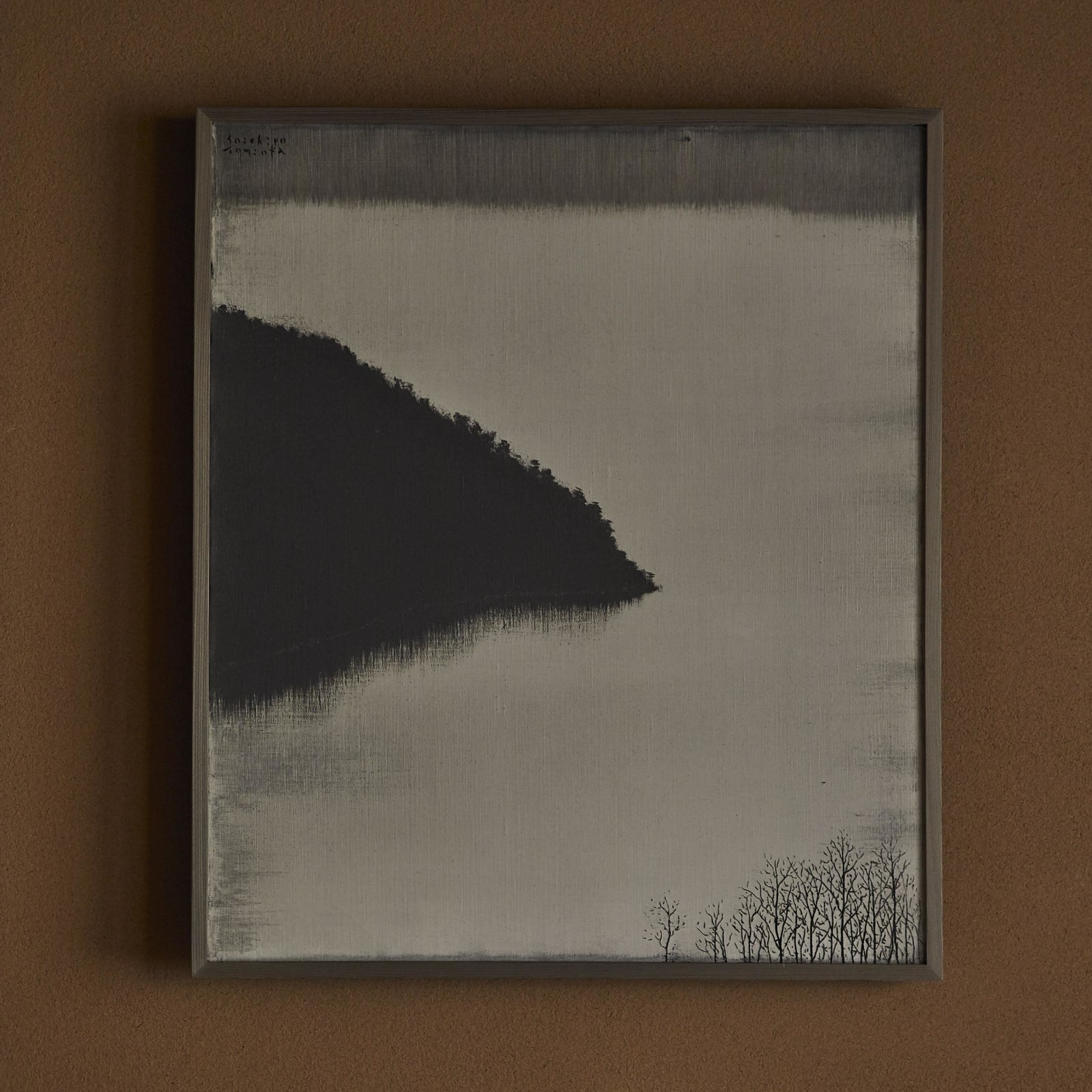Tomioka Sōichirō (1922−1994)
Lake
Oil on canvas, framed (10F)
53 x 45.5 cm
55 x 47 cm (overall)
To resolve the problems of the crack and the yellow discoloration on a painting surface ascribed to the nature of the common white paint, Tomioka Soichiro conducted a research alone for creating a unique paint, later known as “Tomioka White.” Tomioka mainly depicted snow, sky, and the surface of water with that white; in all of which, he focused on picturing the most reflected light to draw the viewer’s attention.
Imparting the atmosphere of landscape painting in ink was one of the distinctive features of Tomioka’s series on the natural beauty of Japan after returning from New York in 1972. In a few years, his way of expressing the light-dark tonality shifted to the one of layering the hatching-like subtle lines. Regretfully, we could not confirm which area he depicted, due to the lack of title by the artist. The calm water surface suggests it might portray a mountain lake. If staring at the edge between the shore and the lake, we would notice there is a dim, horizontal line highlighted above the tree shadow mirrored on the water. Based upon the white-black gradation and the organized composition, the work, also through Tomioka’s expertise in dealing with details, enhances a sense of reality.
Tomioka Soichiro (yoga painter; 1922−1994)
Niigata-born yoga painter. After graduation from trade and technical school, taught himself painting besides working. Received many awards since his work was accepted for the 17th Exhibition of the Shinseisaku Art Society in 1953. Moved to the United States in 1965 and held one-man shows all over the country. Produced a series of snow mountains and snowscapes with his original white paint, “Tomioka White,” after returning to Japan. Broke new ground with his unique style which realizes abstractness in figurative landscape. Member of the Shinseisaku Art Society.
Imparting the atmosphere of landscape painting in ink was one of the distinctive features of Tomioka’s series on the natural beauty of Japan after returning from New York in 1972. In a few years, his way of expressing the light-dark tonality shifted to the one of layering the hatching-like subtle lines. Regretfully, we could not confirm which area he depicted, due to the lack of title by the artist. The calm water surface suggests it might portray a mountain lake. If staring at the edge between the shore and the lake, we would notice there is a dim, horizontal line highlighted above the tree shadow mirrored on the water. Based upon the white-black gradation and the organized composition, the work, also through Tomioka’s expertise in dealing with details, enhances a sense of reality.
Tomioka Soichiro (yoga painter; 1922−1994)
Niigata-born yoga painter. After graduation from trade and technical school, taught himself painting besides working. Received many awards since his work was accepted for the 17th Exhibition of the Shinseisaku Art Society in 1953. Moved to the United States in 1965 and held one-man shows all over the country. Produced a series of snow mountains and snowscapes with his original white paint, “Tomioka White,” after returning to Japan. Broke new ground with his unique style which realizes abstractness in figurative landscape. Member of the Shinseisaku Art Society.



